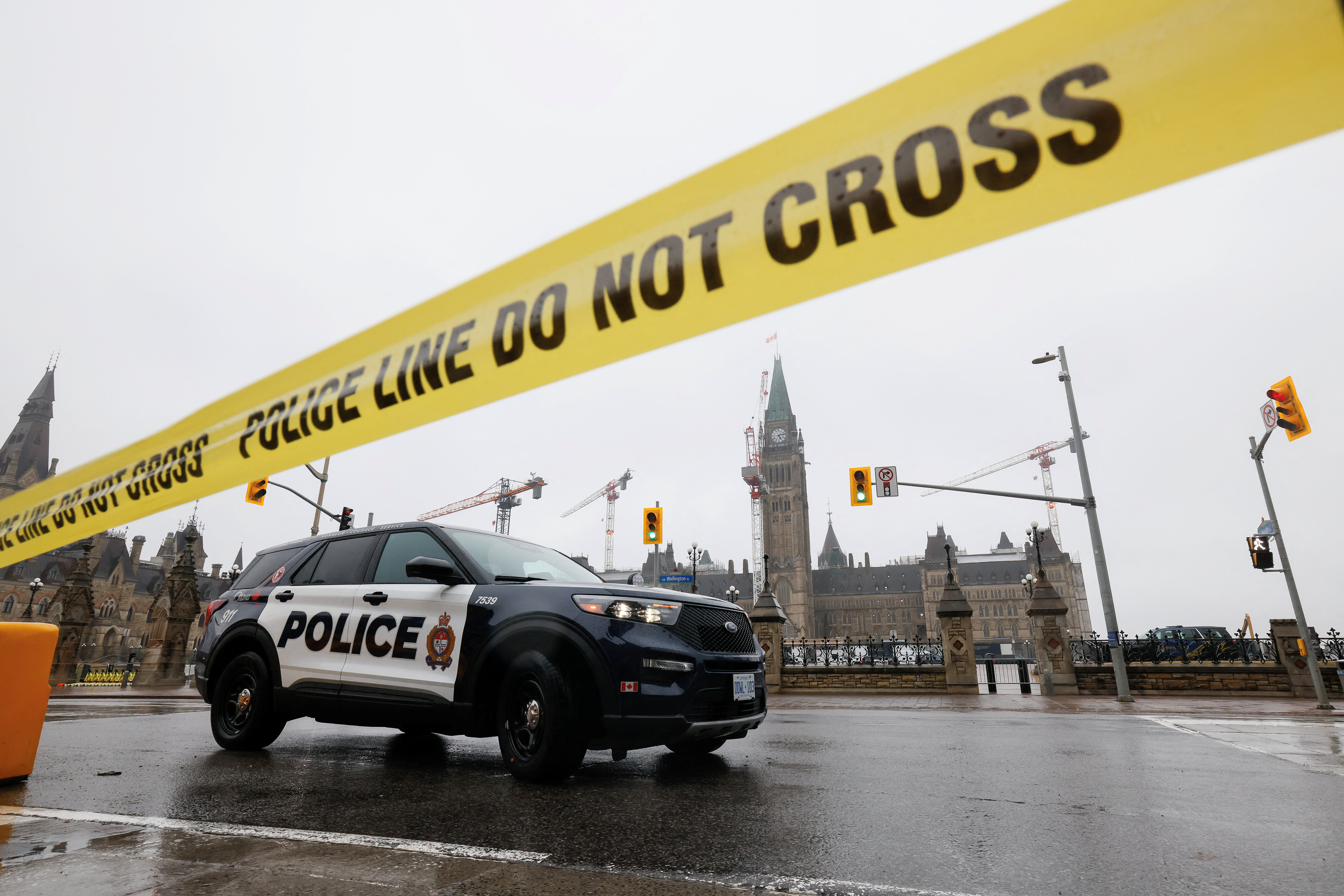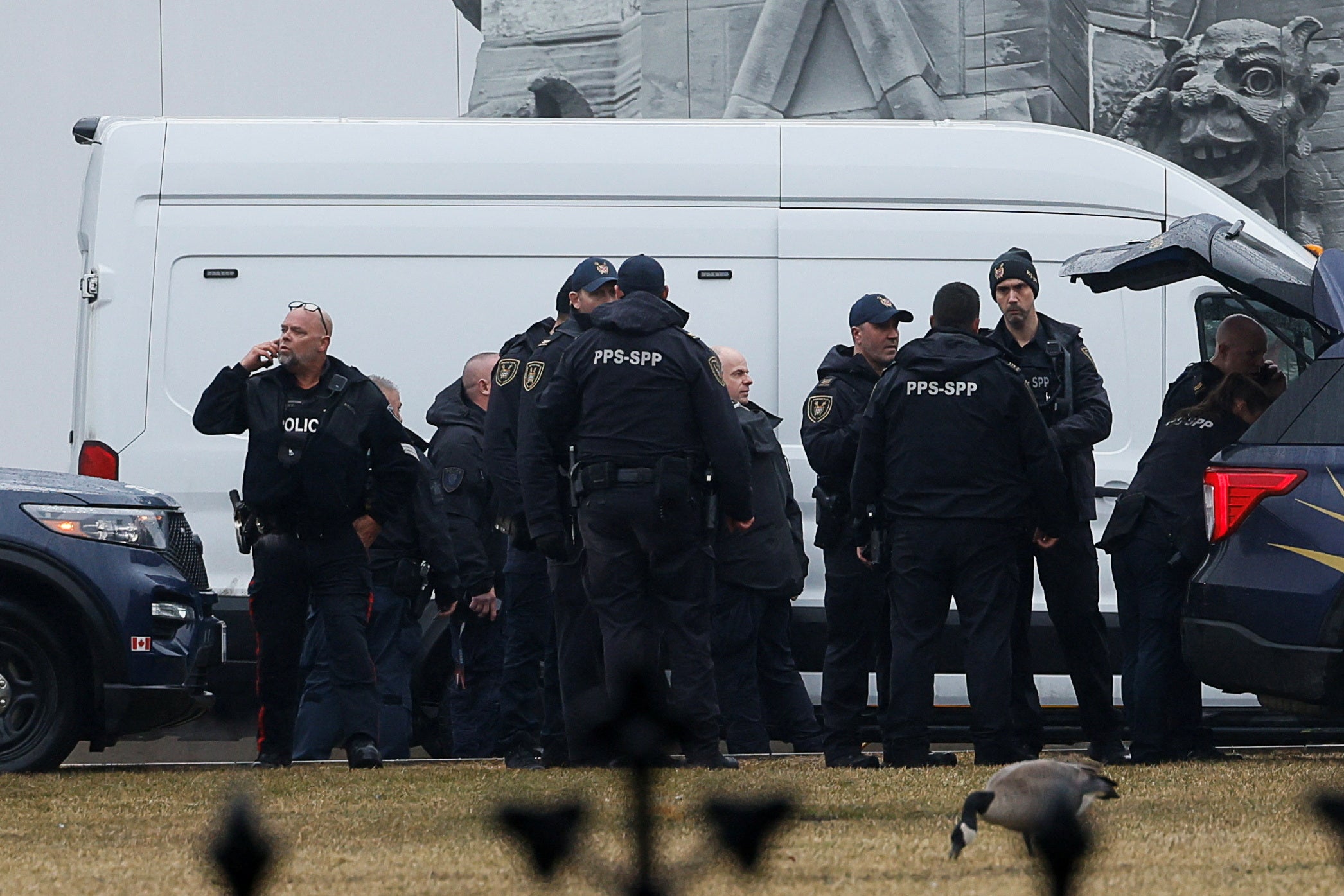“`html
Parliament Hill Lockdown: Barricaded Man Triggers Emergency Response in Ottawa
April 5, 2025
By Archyde News Staff
Ottawa, Ontario, canada
The East Block of Parliament hill in Ottawa, Canada, was placed under lockdown earlier today after a man barricaded himself inside the building, prompting a significant police response.The incident, which began just before 3 p.m. E.T.,led to the evacuation of the East block and a large police presence surrounding the area.
Ottawa Police Service confirmed the situation via X (formerly Twitter) at 4:50 p.m. E.T., stating: “Officers are on scene at Parliament Hill for a barricaded man in the area of East block. There is a large police presence in the area. East block has been evacuated. there are no known injuries and police continue to deal with an individual in this ongoing incident that began just before 3 p.m.”

The Parliamentary Protective Service (PPS) issued an emergency alert urging individuals in the vicinity to “seek shelter in the nearest room, close and lock all doors and hide,” according to the National Post. Those not in the area were instructed to “stay away until further notice.”
This incident raises concerns about security protocols and emergency response strategies, notably within government buildings. In the U.S., similar lockdown procedures are implemented in federal buildings and state capitols, often following active shooter drills or credible threats. For example, the 2013 lockdown at the U.S. Capitol during a police chase serves as a stark reminder of the potential for security breaches and the importance of preparedness.

The PPS alert further emphasized, “Do not travel to locations under lockdown. Wait for further instructions from first responders.”
Mercedes Stephenson of Global News reported on X, “law enforcement source says the situation is contained and the breadth of lockdown is because every situation must be treated as potential worst case scenario to keep things secure.” This cautious approach reflects the heightened sensitivity to security threats in government buildings, particularly in the wake of past incidents globally.
The East Block primarily houses offices for senators and their staff. With the Canadian federal election on the horizon,Parliament is currently dissolved,resulting in reduced activity in the area.

According to the National Post,at least a dozen vehicles from the PPS and Ottawa Police were deployed to surround the East Block,restricting access to the area,including to those with parliamentary passes. Reports also indicate the possible involvement of a bomb squad in the law enforcement operation. A section of Wellington Street in front of Parliament has been closed to traffic.
analyzing the Response and Potential Implications
The swift and comprehensive response to the barricaded man in Ottawa underscores the importance of robust security measures and coordinated emergency protocols. The incident prompts several important questions:
- What motivated the individual to barricade himself in the east Block?
- Were there any prior warning signs or indicators that could have prevented the incident?
- How effective were the communication and evacuation procedures in ensuring the safety of personnel?
- What long-term security enhancements will be implemented in response to this event?
From a U.S. viewpoint, this situation highlights the ever-present need for vigilance and preparedness. The U.S. Capitol Police, such as, has faced increased scrutiny in recent years following security incidents and the January 6th attack. Continuous evaluation and advancement of security protocols are crucial to safeguarding government institutions and the individuals who work within them.
| Key Aspects of Emergency Response | Considerations |
|---|---|
| Communication | Clear, concise alerts to staff and the public; coordination between agencies. |
| Evacuation Procedures | Efficient and safe evacuation routes; designated safe zones. |
| Law Enforcement Response | Rapid deployment; containment strategies; negotiation tactics. |
| Public Information | Timely and accurate updates to the media and the public. |
Counterarguments often arise in the wake of such incidents, questioning the balance between security measures and public accessibility. While stringent security is essential, its equally important to maintain transparency and ensure that government buildings remain open and accessible to the public. Finding this balance requires careful consideration and ongoing dialog between security officials, policymakers, and the community.
What emerging security threats or trends will make government building protection ever more challenging in the next five years?
Parliament Hill Lockdown: Security Expert Analyzes Ottawa Incident Response
April 6,2025
By Archyde News Staff
Interview with dr. Evelyn Reed, Security Consultant
Archyde News spoke with Dr. Evelyn Reed, a leading security consultant specializing in government building security and emergency response, to gain insights into the recent lockdown at Parliament Hill in Ottawa.
dr. Reed, Can you walk us through your initial assessment of the response to the Parliament Hill lockdown in Ottawa?
The response, from what we’ve seen reported, appears to have been quite decisive and followed established protocols.the rapid lockdown of the East Block, the immediate police presence – especially considering the sensitive nature of the location – indicates a well-rehearsed plan.The emphasis on containment and the evacuation procedures, as well as the early public alerts, are all positive indicators of a swift and coordinated effort. The involvement of specialized units, as indicated by reports of a possible bomb squad, suggests they are taking all precautions seriously.
The article highlights concerns about security protocols. Based on the events, what areas would be crucial for security enhancements?
Several areas warrant scrutiny. First, reviewing access control – how the individual gained entry, and if ther were any vulnerabilities in existing systems. Second, a thorough assessment of surveillance capabilities, including cameras and monitoring systems. Thirdly, we need to examine the effectiveness of their threat assessment and intelligence gathering. the interaction protocols – the speed and clarity of which they informed occupants and the public are crucial. regular exercises and drills are essential to continuously refine these protocols and ensure all personnel are prepared.
The potential involvement of specialized units, such as a bomb squad, underlines the seriousness of the situation.How does the presence of such units affect the overall emergency response strategy?
The presence of a bomb squad or similar specialized units instantly elevates the perceived level of threat and therefore influences the entire response strategy. It dictates a cautious approach, prioritizing containment and detailed inquiry. This is evident in the extended lockdown to avoid any potential escalation or secondary devices. It shows they are being very careful. The involvement of specialized units also demands coordination between multiple agencies, which, if effective, can significantly enhance the response’s success and, most importantly, ensure safety.
Given the upcoming federal election, what specific considerations would you advise for maintaining security during high-profile events such as elections?
Elections always bring increased risk due to the heightened political climate and the concentration of individuals and public interest. Security needs to be amplified during such times. This includes bolstering perimeter security at potential locations with heavy media or public interest, like polling places and offices. An increase in uniformed presence can deter any potential threats. It’s also absolutely crucial to be vigilant about information security, including any potential cyber threats targeting polling systems. Collaboration with law enforcement must be increased, and they must be ready.
Beyond the immediate response, what is the importance of public awareness and public trust in these types of events?
Public awareness and trust are absolutely critical. Clear and regular communication is essential, keeping the public well-informed while respecting the integrity of the investigation. It’s vital to provide information on how to protect themselves, and to avoid spreading false information.The government needs to demonstrate openness. Showing them what security measures they have in place and how they work builds trust. A lack of trust can lead to misinformation and decreased confidence in government operations during times of crisis.
What would you say is the most critically important lesson learned from this incident in Ottawa?
The enduring lesson is the need for constant vigilance and preparedness. Security protocols are never static. They need ongoing evaluation, adaptation, and improvement. This means learning from every incident, running regular exercises, and keeping both security personnel and government officials, as well as the public, informed. And,to always assume the worst-case scenario,and plan accordingly.
One final question: What emerging security threats or trends will make government building protection ever more challenging in the next five years? We invite our readers to share their thoughts in the comments.
I think we will see a surge of attacks using technology,by exploiting vulnerabilities in cyber security and utilizing drones. In addition, internal threats, and individuals with extremist views, are becoming more prevalent.This will require security services to adapt new strategies, including digital monitoring. Moreover, they must ensure a high level of awareness to identify potential threats. How will this change security within our workplaces over the next five years?







